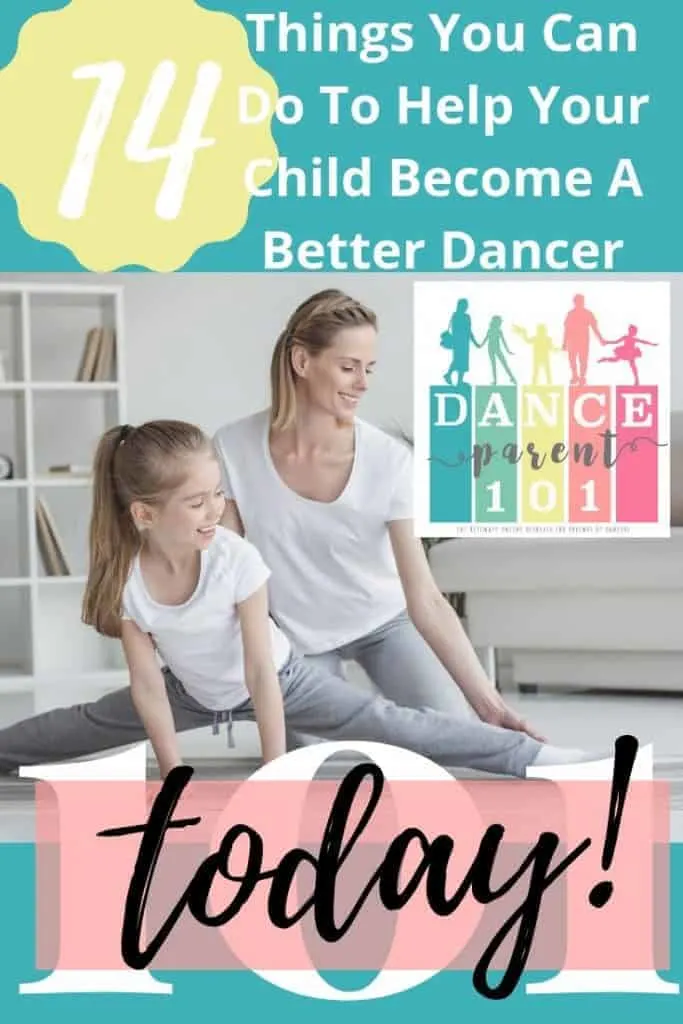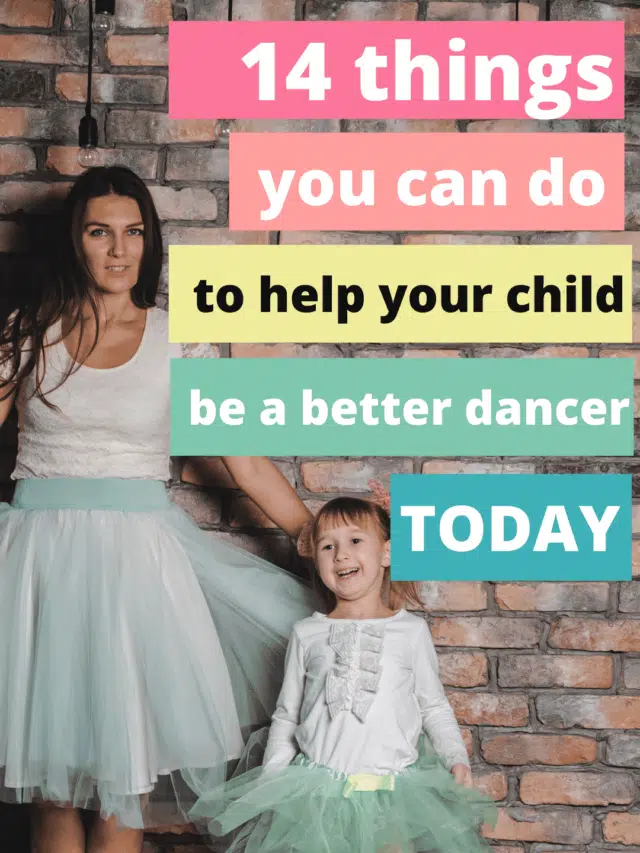A question dance teacher regularly hears from parents is ‘how can I help my child become a better dancer?’ The following is a list of fourteen top tips that are realistic and doable even for the busiest dance parent!
14 things you can do to help your child be a better dancer are:
- Establish good sleep habits.
- Prepare healthy and nutritious meals and snacks.
- Correct their posture.
- Teach them to look after their well-being.
- Encourage daily stretching.
- Encourage the practice of strengthening exercises.
- Create a home dance space.
- Watch live dance performances.
- Model positive dancer etiquette.
- Promote a growth mindset.
- Listen and empathize.
- Back Off.
- Be their number one supporter.
- Prioritize your self-care!
Some of the links in this post are Amazon affiliate links. This means if you click on the link and purchase the item, DanceParent101.com will receive a commission at no extra cost to you.
1. Establish Good Sleep Habits.

The National Sleep Foundation writes
“that in addition to physical conditioning and conscious eating, sleep plays a major role in athletic performance and competitive results? The quality and amount of sleep athletes get is often the key to winning”
National Sleep Foundation
To help your child become a better dancer it is important to ensure that they have good bedtime habits such as a night time routine, no access to screens at least an hour before sleeping, a reasonable bedtime that allows them to get the appropriate amount of sleep for their age, a consistent bedtime even on the weekends and a safe, dark sleeping environment. We love this sleep clock (which you can get through our Amazon Affiliate link) in our house to help develop good sleep habits in our kids from a young age. As it displays the time and does not look too childish, our older children still use it as well, especially for the white noise which they love to listen to as they fall asleep.
Ensuring your child receives enough fresh air and sunlight during the day will also help them establish their internal clock known as their Circadian Rhythm.
2. Prepare Healthy and Nutritious Meals and Snacks.
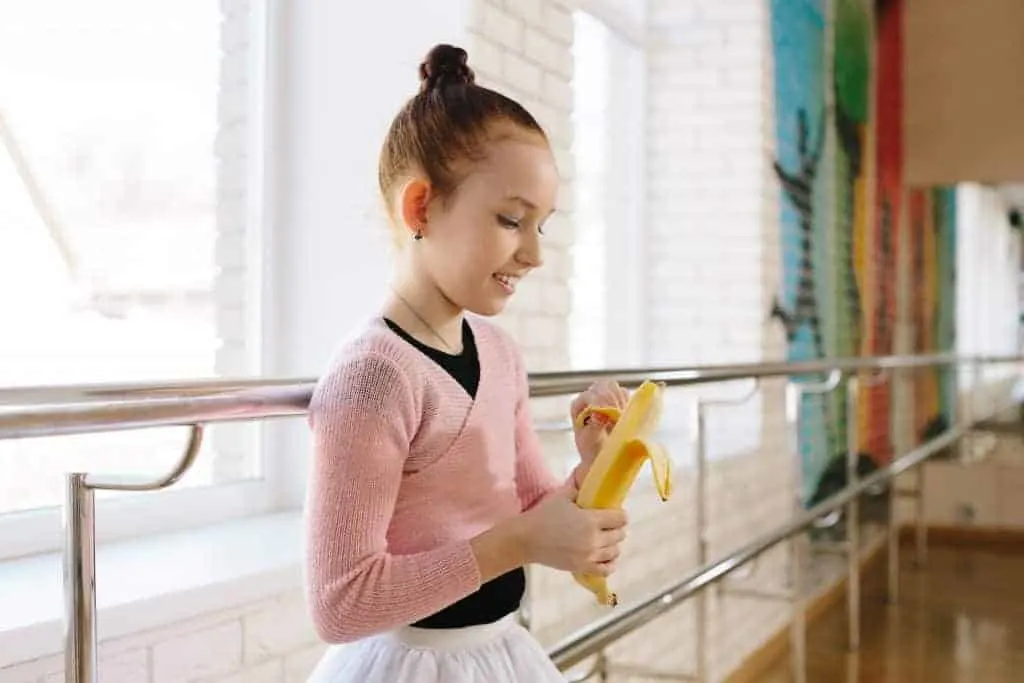
As your child’s parent you have great influence over the types of food that enters their bodies. They eat what you provide and therefore it is important that you help them develop a healthy relationship with food as many dancers struggle with their diet.
Dancers need energy and stamina not just for today’s dance class, but to ensure they have long lasting careers because as the saying goes you are what you eat. A healthy diet full of nutrients, detoxifiers, pre and probiotics, vitamins and minerals will provide the building blocks for those developing muscles and bones. This type of support and teaching good nutrition to your child will benefit them for years to come as they cope with the strains of dance not just on their bodies but also on their thoughts about their bodies. For the most current up to date information on nutrition for kids you can check out the United States Department of Agriculture Choose My Plate website or the U.S. Department of Health and Human Services information about How to Eat Healthy.
3. Correct their Posture.

Dancers, especially those taking ballet lessons, train and strengthen their muscles to produce perfect posture whilst in class. But all that work goes to waste if your child spends twice as much time hunched over a screen, tablet or even their homework. When slouching many of the muscles and tendons along the front of the body are contracting, and when in that position for long periods of time they tighten which is not what dancers want – tthey want long elongated, flexible muscles. We need good posture to be able to balance, and dancers need better than good balance to be able to perform the various movements required of them. Ensuring your child has good posture outside the dance class room will “helps (them) maintain correct form while exercising, which results in fewer injuries and greater gains” (Harvard Health Publishing).
4. Teach Them to Look After their Well-Being.

Dancers need to be in top performance form all the time. At the first sign of a possible injury or illness your child should have the confidence to know that looking after their body is important and to seek medical assistance or to start taking better care of themselves, for example resting instead of going out with friends. As the parent you therefore need to take their ailments seriously to show them that their health is a serious matter. Discuss what kinds of medical professional they might need to see such as a physiotherapist or osteopath or another specialist depending on the problem.
If it is the first time they need to see a specialist employ your child’s help in finding the best one for you. You might need to work out if you need a doctors referral or if this particular specialist compared to another one that is similar is covered by your insurance. If your child is mature enough get them to call and make the appointment or make the call using speaker phone so they can hear how to do it themselves in the future. Involve them as much as possible so they learn how to solve their own health problems including how the service will be paid for.
It is also important to teach your child about mental well-being. The dance industry can be a hard nut to crack into and even those with the most resilience and grit need mental help to push through their struggles. Having open discussions about mental health with your dance kids can make it easier for them to seek help if they ever need it. Alot of people can be unsure of how to discuss issues of mental health with their children, this article from Today’s Parent gives you some tips on how to do so.
5. Encourage Daily Stretching.
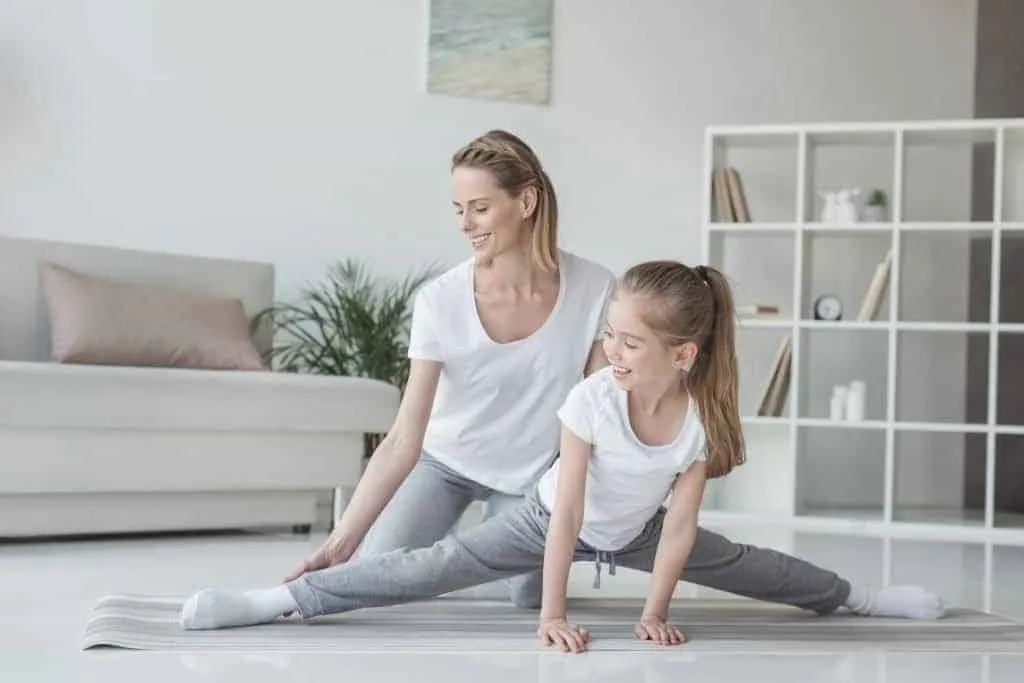
I can remember coming back to dance class from summer holidays and being relegated to a secondary role in a routine because I had basically lost all my natural flexibility as I had not stretched at all during the holidays.
Stretching at home is so important to becoming a better dancer, but truth be told it can sometimes be boring, it can hurt a little as your muscles initially release and you don’t get results overnight which is hard for kids to understand as they want instant gratification. I wish I had, had some stretching tools such as the ones we review on our recommended resources page to practice with at home to both motivate me and make it easier to hold some of the more challenging stretches. Items such as a resistance band, leg stretchers and stretch bands can all help dancers develop greater flexibility!
It is so much easier for kids to gain flexibility when they are younger as their muscles and tendons are more malleable than to try and gain flexibility when they are older. If you encourage a daily practice of a few core stretches, done consistently there is no doubt that this will help your child become a better dancer.
If you are unsure of what types of stretches your child should be doing at home ask your child’s dance teacher for some ideas. YouTube has a lot of videos on the subject as well.
6. Encourage Practice of Strengthening Exercises.
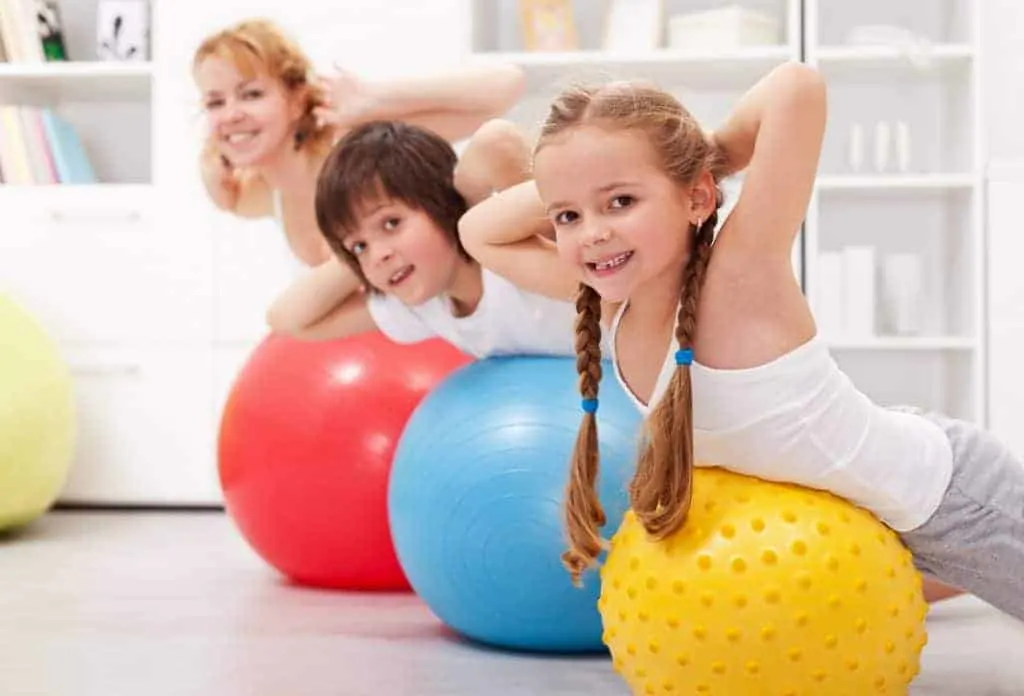
As well as stretching at home, adding on a daily strengthening routine will help prevent injuries, increase balance, increase elevation in jumps, help boys carry their partners in pas de deux lessons and assist girls with their pointe work.
For older children, this might include attending a teen gym or working with weights at home with you. For younger children building strength might be in the repetition of core exercises that your dance teacher recommends to you. Adding in a resistance band at home to these exercises can increase your child motivation’s and make working out at home fun. You can check out the resistance and stretch bands that we recommend on our resource page here that can be used in different ways to strengthen and stretch dancers muscles. An exercise ball is also great for helping dancers develop core strength and target muscles needed when dancing. This kids size exercise ball from Amazon would be perfect for at home strengthening and there are plenty of videos from Progressing Ballet Technique on YouTube on how to use one.
Again you should first ask your child’s dance teacher for a routine that will best serve your child, but exercises such as the plank, push ups, releves or rising up repeated onto the ball of the foot whilst in first position are a useful start.
7. Create a Home Dance Space.
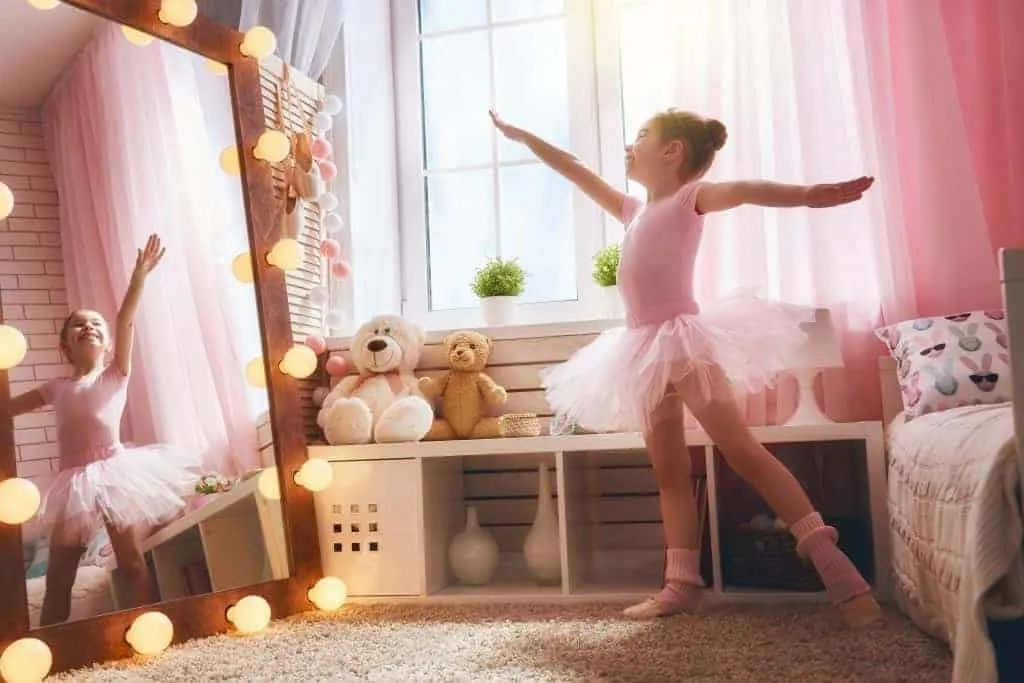
A home dance space does not mean you have to create a home dance studio, although if you have space for one, that would be fantastic. A home dance space is just a designated area in your house that is devoted to your child’s practice. It might exist in the corner of the lounge room, or in their bedroom or it might be that you dedicate a whole room to being a dance studio.
Where ever it is some equipment you might like to look into buying to set one up might be a full-length mirror, Marley type flooring such as a Dance Dot and a ballet barre.
We like this full-length mirror from Amazon as it gives you the option to either hang it on the wall or use the stand that comes with it so it can be moved from place to place. For flooring, a dance dot is a fantastic nonpermanent and portable option. Dance Dots come in a variety of sizes and allow your child to practice their ballet on any type of flooring such as carpet and in the smallest of spaces. They can also be used to tap on. Portable Dance Dot flooring is also great because they are flat and can be picked up and moved from room to room and easily stored under a bed or against a wall.
A ballet barre would be great addition to any home dance space and you can look at our favorites on our resource page. A box to hold various equipment such as stretch bands could be permanently set up next to the mirror for easy access. Having a set space for your child basically creates an invitation for them to practice more often.
8. Watch Live Dance Performances.
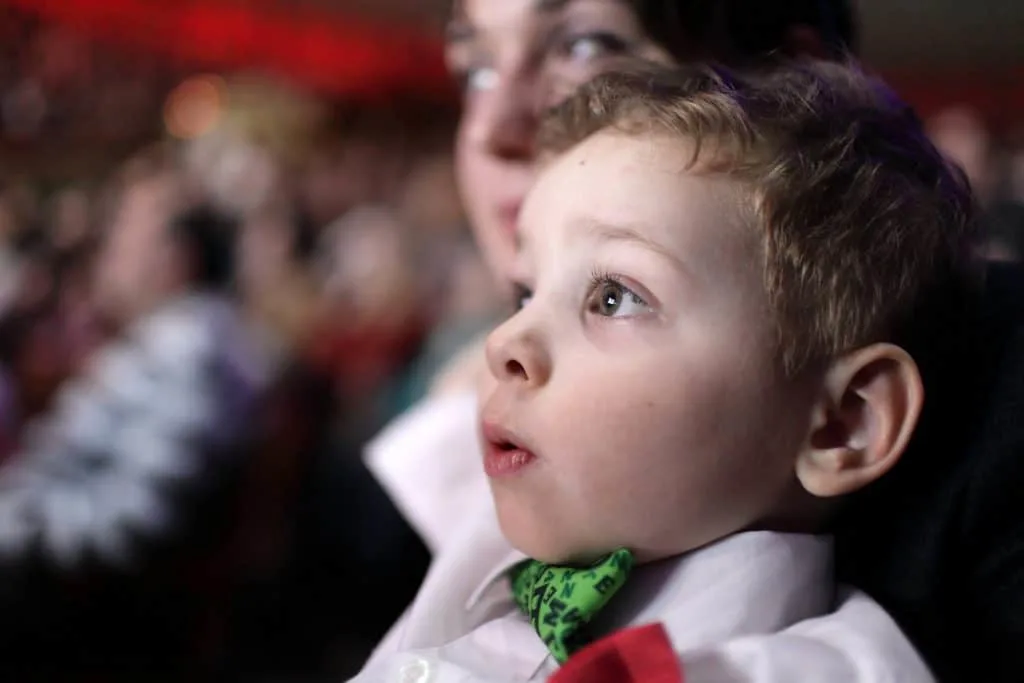
Investing in taking your child to watch live performances is extremely important. Dance is a physical art form and is meant to be seen live where you can connect with the dancers through the audience experience. I still remember the goosebumps I felt watching the Joffrey Ballet perform the repertoire of the artist Prince. It was utterly amazing and so motivating, I couldn’t wait to get into my next dance class and work towards being as good as the dancers I had watched on stage.
Seeing dance live opens the imagination as to what can be if a student really puts their mind to it. It also helps them realize whether this is what they want to do because if they can’t see themselves in the performers and want to be up there doing what they are doing, perhaps becoming a dancer isn’t their calling after all.
When you watch a live performance with your child you are then able to develop critical thinking and appreciation for the art in your child through the discussions you have with them about what you have seen. You can review the show and the dancers which gives them the skills to review their own abilities and performances and see that it is natural to do so and that peoples opinions about a performance or dancer will differ.
9. Model Positive Dance Etiquette.
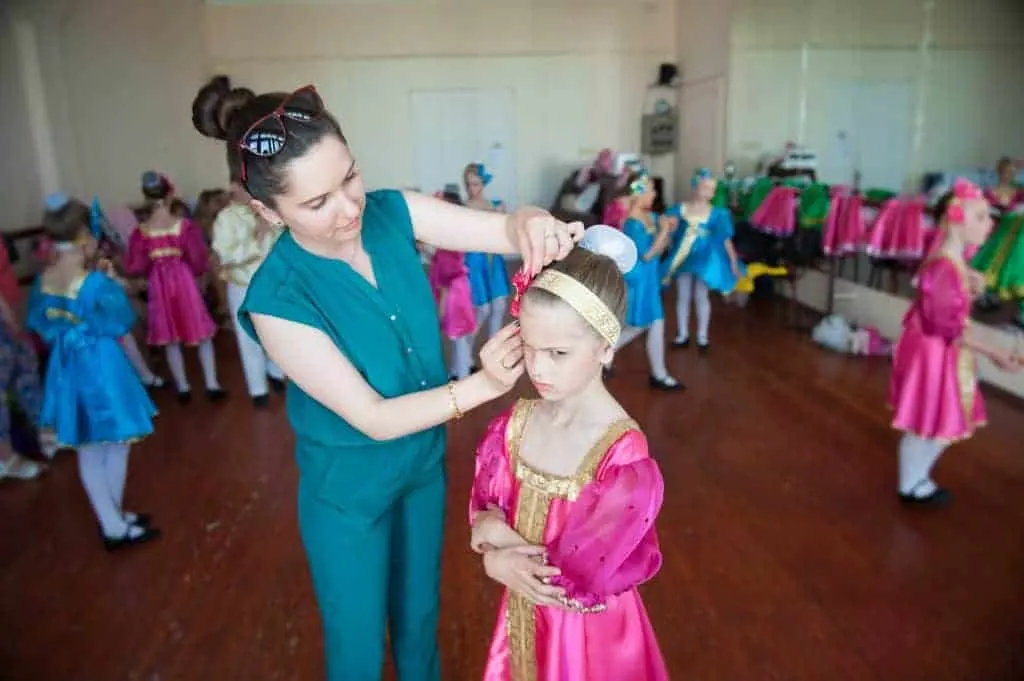
As a dance parent, you will be thrust into a somewhat superficial world where things such as the position of your child in a group dance or the fact that your child’s costume was delivered with a (fixable) hole in a seam seem to matter a whole lot. How you react to each of these situations sets the tone for how your child will respond to similar issues they face in the dance classroom whether it be jealousy from other dancers or rejection to get a place in a competition team or summer school intensive.
Dance etiquette is basically just using your manners and common sense around all things dance. For example, sitting in the front row whilst your child’s top competitor is competing on stage might seem as though you are trying to intimidate them, even if you sat there thinking your child was on next. Teaching your child to be empathic and think about how they would wish to be treated is important in cultivating dancer etiquette, whilst also balancing your child’s ability to know when to shine to get that first place or position with that summer school. For some more tips you might like to read our article How to Be A Good Dance Parent: 7 Tips from Seasoned Moms and Dads
10. Promote a Growth Mindset.
Carol Dweck 30 years ago developed the theory that children who continually fail, do so because they have developed a fixed mindset. A fixed mindset means they believe that they have a certain amount of intellect and that they are unable or have a hard time learning new things and that growth has a fixed point to which you get to and can’t go past – very much like that saying you can’t teach an old dog new tricks. She discovered that those children who attained success did so by having what she coined as a growth mindset. A person with a growth mindset believes that they are continually learning and growing and can always improve and get better. A person with a growth mindset knows that even if they can’t do something now, it doesn’t mean that they will always not be able to do it, they just can’t do it yet.
A growth mindset is therefore so important for dancers because you never stop learning as a dancer and the only way to improve and get better is to believe that you can, maybe not right now this second, but with hard work, perseverance, grit, and resilience that you can and will. Want a cheat sheet to help develop a growth mindset in your kids by changing what you say to them? Click on the cheat sheet image and join our newsletter to get access to the pdf!
11. Listen and Empathise.

Don’t try to solve all your child’s problems. Dancing is tiring on both the body and mind and sometimes all your child needs is a caring and empathic ear to listen to all their grievances. They might need you to listen to them talk about how mean their teacher was in a class that day, about how they were taught new steps too fast, about how another dancer laughed when they fell out of a pirouette or just about how sore their muscles are. Don’t feel as though you have to solve any of these things, because generally, your child is coming to you to release all the hurts they felt that day. They are not telling you about how after falling out of the pirouette they nailed a double or that they missed out on the choreography because they were chatting with a friend or were distracted or tired or for any other reason. Listen and empathize and if they ask for advice give it, you will be astounded by the solutions they can come up with themselves, just by being given the space to talk through what they are feeling and going through.
12. Back Off.
Don’t be that dance parent – you know the dreaded parent living out their dreams through their child. Of course, guide your child and help them make decisions, but make sure you are helping them make the best decisions for them and not you. Did you know that Oprah once did this with one of her ‘adopted daughters’? She openly admits to pressuring one of her girls or students from Africa into attending a certain university over another because it was her dream to have gone to that college. Later when the girl came to her incredibly unhappy she realized that she had unconsciously encouraged her to pursue her dreams, rather than letting the girl follow her heart and what she wanted.
It can be really hard to sometimes as a parent decipher whether we are helping our children achieve their dreams or ours and one of the best books on learning to become more awakened and conscious in your parenting decisions are the books by Dr. Shefali Tsbary – who also happens to be Oprah’s number 1 parenting guru. I have read both ‘The conscious Parent‘ and her number 1 best selling book ‘The Awakened Family‘ both of which you can get buy through our affiliate links to Amazon. Alternatively, you could listen to any of Dr. Shefali’s books through Audible with a 30 day free trial which you can access by clicking on the link here.
13. Be Their Number 1 Supporter.
Celine Dion will always count her father, mother and 13 brothers and sisters as being her top fans and is always grateful even today with her level of success for the support they gave her in helping her achieve her dreams.
Being a number 1 supporter means being positive through the losses and hard times as well as when things are going well. Your child needs to know that someone will always have their back, so even if you are not happy with how they behaved, treated someone else or with the decisions they are making with their career, ensuring they know they can always count on you for unconditional love will help ease the sting of a loss and help propel them forward from failure and closer to success.
14. Prioritise Your Self Care.
You cannot look after or help inspire anyone else to become better if you are not taking care of your self and your own needs. In fact, your children learn how to look after their own needs by copying what you do, so if you ever needed permission to put yourself first, there it is. You are doing your children an injustice by not prioritizing your self-care. Don’t believe me…. then maybe you will listen to Kristen Bell!






